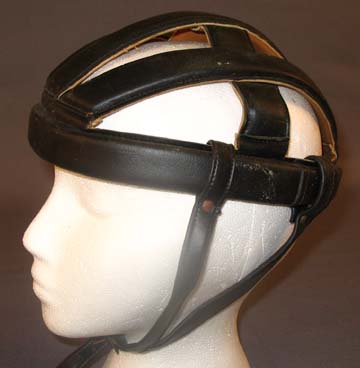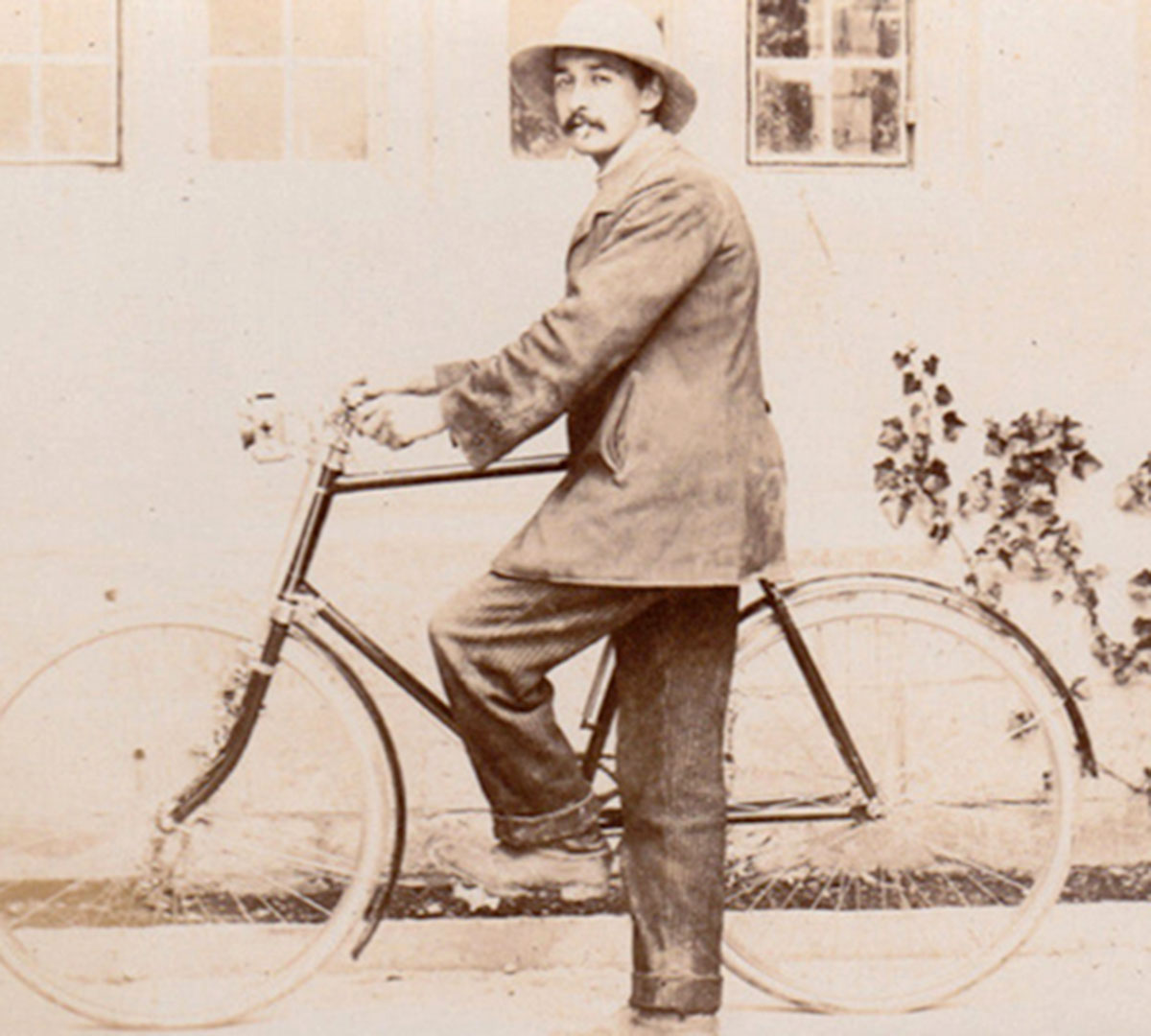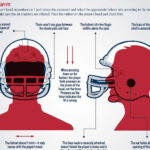Bike helmets were first invented in 1975. They were created to enhance cyclists’ safety and reduce head injuries.
Cycling enthusiasts and safety experts have long recognized the importance of protective headgear. Before 1975, cyclists had limited options for head protection, often relying on leather caps. The introduction of bike helmets marked a significant advancement in cycling safety. Early helmets were made from hard plastic and polystyrene foam, offering better protection against impacts.
Over time, helmet design has evolved, incorporating advanced materials and improved aerodynamics. Today, helmets are essential gear for cyclists, providing crucial protection and peace of mind. Whether you’re a casual rider or a competitive cyclist, wearing a helmet is a simple yet effective way to safeguard your well-being on the road.
Early Beginnings
The history of bike helmets dates back over a century. In the early days, people started recognizing the need for safety. This need arose as cycling became more popular. Let’s delve into the early beginnings of bike helmet development.
First Safety Concerns
As cycling gained popularity, so did accidents. Early cyclists faced many dangers on the road. Streets were not designed for bikes. Crashes and falls were common. Safety became a serious issue. People began to seek ways to protect their heads.
Initial Helmet Designs
The first helmet designs were simple. They were not like today’s helmets. Early helmets were made of leather. These leather helmets were mostly used by racing cyclists. They offered basic protection but were not very effective.
Here is a comparison of early helmet features:
| Material | Protection Level | User Group |
|---|---|---|
| Leather | Basic | Racing Cyclists |
| Metal | Moderate | Military Cyclists |
Early helmets were not widely accepted. Many cyclists did not wear them. They were uncomfortable and hot. Over time, helmet designs improved. Materials evolved, offering better protection and comfort.

Credit: www.davison.com
The 20th Century
The 20th century was a time of incredible innovation and change. This period saw the invention of many new technologies, including the bicycle helmet. These helmets have saved countless lives and made biking safer for everyone.
Motorcycle Influence
Motorcycles became popular in the early 20th century. Riders needed protection due to the high speeds and risks involved. Early motorcycle helmets were made from leather and offered minimal protection. As accidents increased, the need for better helmets became clear.
The development of motorcycle helmets influenced bicycle helmet design. They needed to protect the head and reduce injuries. Engineers began to explore new materials and designs. This led to significant advancements in helmet safety.
Advent Of Bicycle Helmets
In the 1970s, bicycle helmets started to gain popularity. Before this, cyclists rarely wore helmets. The first bicycle helmets were inspired by motorcycle helmets. They were heavy and uncomfortable but provided better protection than nothing.
In the late 20th century, materials like foam and plastic were introduced. These materials made helmets lighter and more comfortable. The design also improved, making helmets more aerodynamic. This encouraged more people to wear them while cycling.
Today, modern bike helmets are a result of years of innovation. They are designed to absorb impact, reduce head injuries, and ensure a comfortable fit. The journey from early helmets to today’s advanced designs has made cycling safer for millions.
Materials Evolution
The materials used in bike helmets have evolved significantly. Early helmets used basic materials, but modern ones use advanced technology. This evolution improved safety and comfort for cyclists.
Leather And Cloth
In the early days, bike helmets were made from leather and cloth. These materials were chosen for their availability and ease of use. Leather offered some protection, while cloth added comfort. These helmets were better than no helmet, but they had limitations. They were not very durable and offered minimal impact protection.
Here is a simple comparison:
| Material | Advantages | Disadvantages |
|---|---|---|
| Leather | Durable, Comfortable | Minimal Impact Protection |
| Cloth | Comfortable, Lightweight | Not Durable, Limited Protection |
Introduction Of Plastics
The introduction of plastics marked a turning point. Plastics are more durable and offer better protection. They can absorb impact better than leather and cloth. Early plastic helmets were simple but effective. They paved the way for modern helmets.
The advantages of using plastics in helmets include:
- Better Impact Protection
- Lightweight
- Durable
Here is a list of key milestones:
- First plastic helmets introduced in the 1970s.
- Designs improved with better materials in the 1980s.
- Modern helmets use advanced plastics and composites.

Credit: www.helmets.org
Safety Standards
The invention of bike helmets brought a significant change in rider safety. Safety standards ensure these helmets provide the necessary protection. These standards have evolved over time to improve helmet effectiveness.
First Regulations
The first safety regulations for bike helmets appeared in the 1970s. Organizations began setting specific requirements for helmet design and materials. The goal was to reduce head injuries during accidents.
Early regulations focused on:
- Helmet shape
- Material strength
- Secure fit
Impact Testing
Impact testing became a crucial part of helmet safety standards. These tests simulate real-world crashes to check helmet durability. There are several types of impact tests:
- Drop tests from various heights
- Penetration tests with sharp objects
- Retention system tests to ensure straps stay secure
Each test helps ensure helmets can protect against serious injuries.
Technological Advancements
The invention of bike helmets has seen numerous technological advancements over the years. These advancements have improved safety, comfort, and performance. Let’s explore some key areas where technology has made a significant impact.
Aerodynamics
Aerodynamics plays a crucial role in bike helmet design. The goal is to reduce air resistance. This helps riders go faster and use less energy. Modern helmets feature sleek shapes and smooth surfaces. These designs cut through the air efficiently.
Some helmets even have integrated visors. This reduces the drag caused by wind hitting the face. Wind tunnel testing is often used to refine these designs. Engineers can see how air flows over the helmet. This helps them make improvements.
Ventilation
Proper ventilation is essential for rider comfort. Early bike helmets often lacked sufficient airflow. Modern helmets feature strategically placed vents. These vents allow cool air to flow in and hot air to escape. This keeps the rider cool and comfortable.
Many helmets use a combination of large and small vents. This optimizes both airflow and protection. Some helmets even have internal channels. These channels guide air over the rider’s head. This enhances the cooling effect.
Below is a table showing the evolution of ventilation in bike helmets:
| Era | Ventilation Features |
|---|---|
| 1970s | Minimal vents, basic airflow |
| 1990s | More vents, improved airflow |
| 2010s | Advanced vent designs, internal channels |
These advancements in aerodynamics and ventilation have made bike helmets safer and more comfortable for riders of all ages.
Modern Designs
Modern bike helmets have evolved significantly over the years. They provide better protection, comfort, and style. The latest designs are innovative and cater to the needs of different riders.
Lightweight Helmets
Lightweight helmets are popular among riders. They offer excellent protection without compromising comfort. These helmets use advanced materials like carbon fiber and polycarbonate. This makes them light yet strong.
Here are some benefits of lightweight helmets:
- Reduced neck strain
- Improved aerodynamics
- Better ventilation
Manufacturers focus on making helmets both light and durable. This ensures maximum safety for cyclists.
Smart Helmets
Smart helmets are the latest trend. They integrate technology to enhance the riding experience. These helmets come with features like:
- Bluetooth connectivity
- Built-in speakers
- GPS navigation
- Crash detection
Smart helmets use sensors to monitor the rider’s surroundings. They provide real-time alerts and data. This helps in making the ride safer and more enjoyable.
Some popular smart helmet brands are:
| Brand | Features |
|---|---|
| Livall | Bluetooth, Speakers, SOS Alert |
| Coros | GPS, Heart Rate Monitor |
| Sena | Intercom, Voice Commands |
These helmets not only protect but also make riding fun and interactive.
Impact On Cycling Culture
The invention of bike helmets has greatly influenced cycling culture. Helmets have become more than just safety gear. They symbolize awareness, responsibility, and community among cyclists.
Increased Usage
Before bike helmets, cycling was risky. Many accidents resulted in severe injuries. With the invention of helmets, more people began to ride bikes. Helmets made cycling safer for everyone. This led to an increase in the number of cyclists on the road.
Governments and schools promoted helmet usage. They launched campaigns to educate people. They provided free helmets to children. This effort increased helmet usage significantly.
Safety Awareness
Bike helmets raised safety awareness among cyclists. People became more conscious of road safety. They understood the importance of protecting their heads. Helmets reduced the risk of head injuries by a large margin.
Safety organizations also played a role. They conducted studies and shared results. These studies showed the benefits of wearing helmets. This information spread quickly and influenced many cyclists.
Here are some key points highlighting the impact:
- Reduction in severe head injuries
- Increase in overall cycling safety
- Enhanced public awareness about road safety
Helmets have become a standard part of cycling gear. They are now seen as essential for every rider, young or old.
Future Trends
Bike helmets have evolved significantly since their invention. Today, future trends promise even more innovations. Let’s explore what’s next for bike helmets.
Sustainability
The future of bike helmets focuses on sustainability. Manufacturers use eco-friendly materials. These materials are both safe and green.
Recycled plastics and biodegradable materials are popular choices. This reduces waste and protects the environment.
Some companies explore renewable energy sources for production. Solar power and wind energy are two examples.
| Material | Benefit |
|---|---|
| Recycled Plastics | Reduces landfill waste |
| Biodegradable Materials | Breaks down naturally |
Customization
Customization is another exciting trend. Riders can now design their helmets. They can choose colors, patterns, and even shapes.
Custom-fit helmets provide better protection. 3D printing technology helps create these perfect fits. This technology ensures every helmet fits like a glove.
There are also smart helmets. These helmets have built-in lights, GPS, and communication systems.
- Choose your favorite color.
- Pick a unique pattern.
- Get a helmet that fits perfectly.
- Enjoy added features like lights and GPS.
These innovations make biking safer and more fun. The future of bike helmets looks bright and exciting.

Credit: www.gearist.com
Frequently Asked Questions
When Were Bike Helmets First Invented?
Bike helmets were first invented in the 1970s. The earliest designs were made from leather and primarily used by professional cyclists.
Who Invented The First Bike Helmet?
The first modern bike helmet was invented by Bell Sports. They developed it in the 1970s, revolutionizing cycling safety.
Why Were Bike Helmets Invented?
Bike helmets were invented to protect cyclists. They aimed to reduce head injuries and improve overall cycling safety.
What Materials Were Early Bike Helmets Made Of?
Early bike helmets were made from leather. Later designs incorporated hard plastic shells and expanded polystyrene foam for better protection.
Conclusion
Bike helmets have come a long way since their invention. They have significantly improved in safety and design. Wearing a helmet can save lives and prevent injuries. Always choose a certified helmet for maximum protection. Stay safe and enjoy your rides with confidence.

